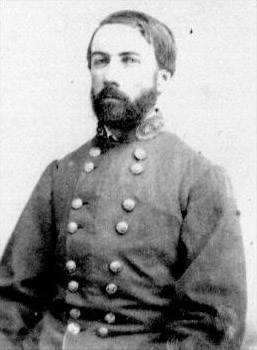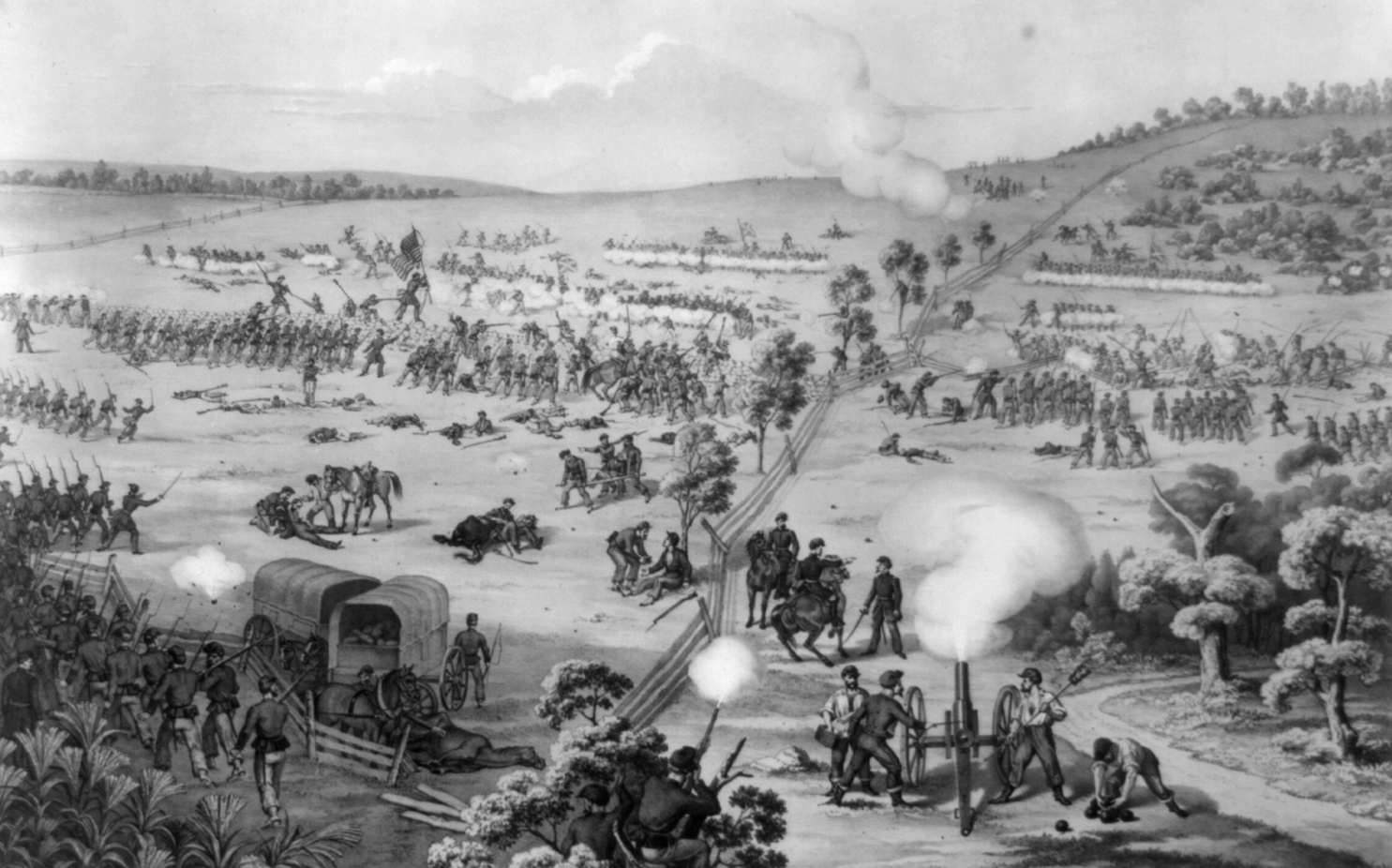 |
| D. H. Hill |
There were three main gaps in which fighting took place. Hill held only the two north most, Turner's and Fox's, but he still had only 5,000 to defend these positions separated by two miles. Further south was Crampton's Gap, held by a small force from McLaw's division. McClellan assaulted Turner's and Fox's gaps with his main army, while Franklin attacked Crampton's Gap with his corps in an attempt to raise the siege of Harper's Ferry.
 |
| Jesse Reno |
McClellan advanced cautiously, as he did not know the small numbers of rebels holding the gap. Confused and fierce fighting continued throughout the day. Jesse Reno, commander of the 9th Corps made an attempt to Fox's gap. Hill sent in Samuel Garland's brigade, but Garland commanded inexperienced troops, and they were confused. The Federals were able to slowly push back the Confederates. Both Garland and Reno fell in the fighting. The Federal advance was halted by the timely arrival of Confederate reinforcements under John Bell Hood.
D. H. Hill went up to a lookout station and saw
the vast array of McClellan spread out before me. The marching columns extended back as far as eye could see in the distance; but many of the troops had already arrived and were in double lines of battle, and those advancing were taking up positions as fast as they arrived. It was a grand and glorious spectacle, and it was impossible to look at it without admiration. I had never seen so tremendous an army before, and I did not see one like it afterward.
Hooker's 1st coprs attacked Turner's gap. His preparations for the attack were slow, and by the time he attacked at 4 pm, Longstreet's men were arriving to bolster Hill's thin line. Rufus Dawes of the Iron Brigade, one of Hooker's most famous units, wrote:
From Turner's gap in our front, and along the right on the summit of the mountain, the artillery of the enemy was firing, and we could see the shells bursting over and amoung our advancing troops. For nearly an hour we laid upon the grassy knoll, passive spectators of the scene. The sun was sinking behind the mountain, when our order came to move forward. ... For half a mile of advance, our skirmishers played a deadly game of 'Bo-peep.' hiding behind logs, fences, rocks and bushes. ... Our skirmishers ... encountered the enemy in force and were behind a fence. ... Suddenly the seventh Wisconsin halted and opened fire, and we could see a rapid spitting of musketry flashes from the woods above and in front of us, and wounded men from the sevent began to hobble by us. ... Our whole line was slowly advanced up the mountain, the men shouting and firing. ... The rebels fell back from the woods, but stuck to the stone wall. The hostile lines had approached each other closely and the fire was deadly. It was dark and our only aim was by the flashes of the enemy's guns.Down at Crampton's Gap, Franklin had attained more success. He broke through the Confederate defenders, capturing the gap in the afternoon. But he would be too late to aid Harper's Ferry. The delays in the attacks meant that although Lee had lost key positions on South Mountain, the siege had not been relieved or the army destroyed. The Confederates would have another day to concentrate to avoid destruction.
 |
| Dawes |




0 comments:
Post a Comment